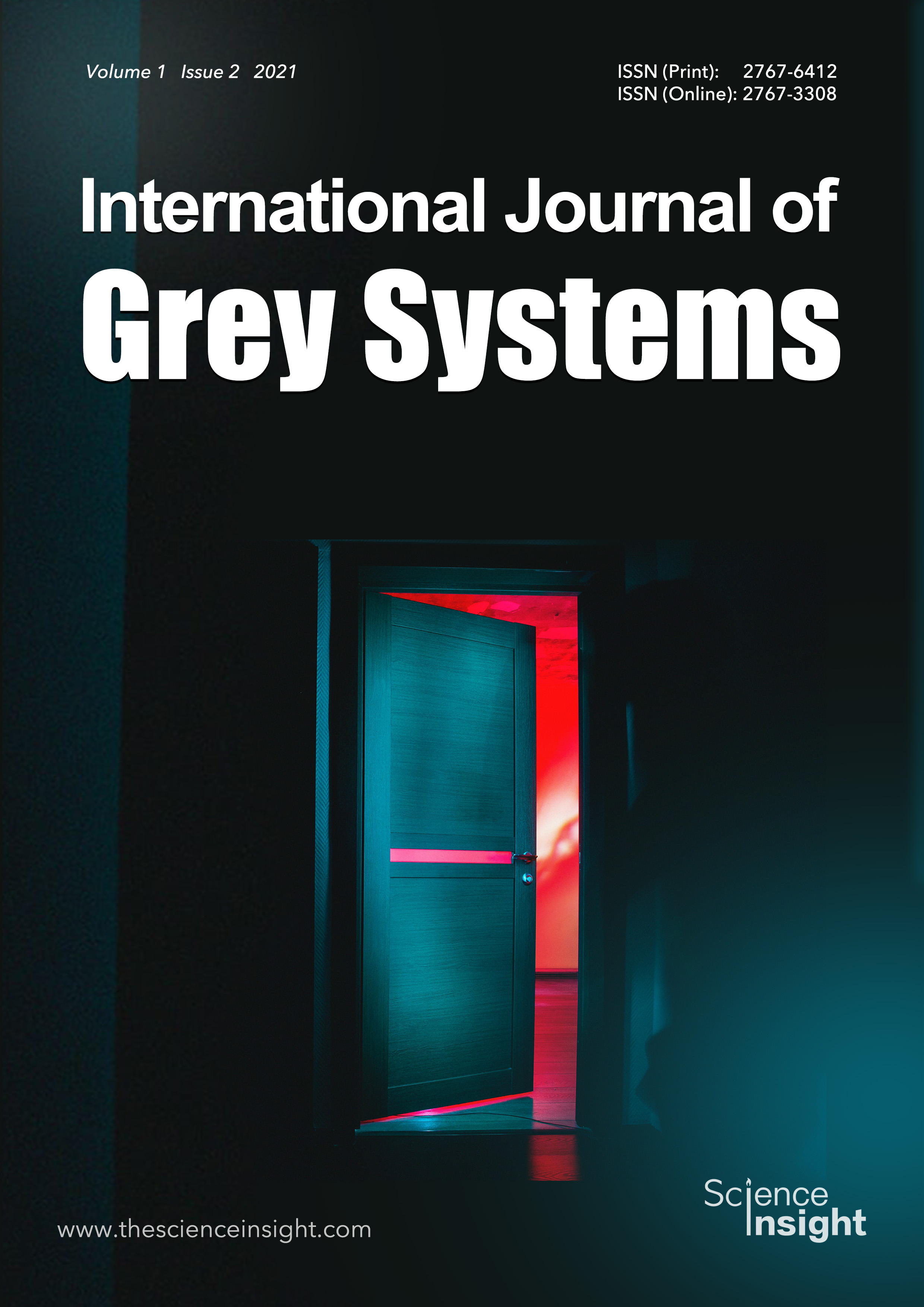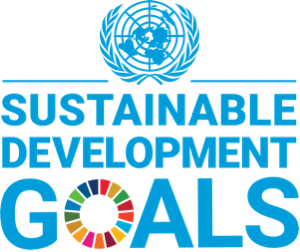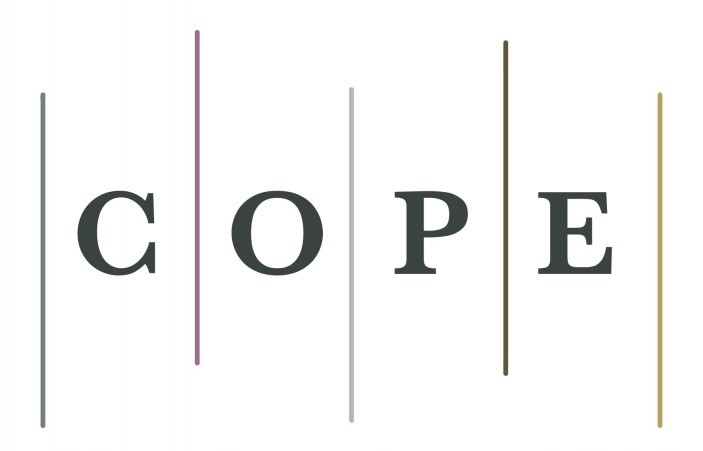Indonesian Trade Deficit with China: Background and Grey Forecasting
DOI:
https://doi.org/10.52812/ijgs.15Keywords:
Import, Export, Trade, Indonesia, Trade deficit, China, Grey ForecastingAbstract
Indonesia's trade balance with China has remained negative since 2010. The current study forecasts Indonesia's trade deficit with China for five years using the Even Grey Forecasting model EGM (1,1,α,θ). The sample was conducted by collecting the data of traded deficits for the past ten years. Data were collected from the official websites of Indonesia's Central Bureau of Statistics of (BPS), Ministry of Trade, among others. By building upon the literature, the study argues that trade deficits might have occurred from internal and external factors, such as the lack of infrastructure, the depreciation of the Rupiah (Indonesian currency) against the U.S. dollar, and the ASEAN-China Free Trade Agreement. Comparative analysis with Linear Regression (LR), Exponential Regression (ER), and Exponential Triple Smoothing (ETS) revealed the superiority of the grey forecasting model for trade deficit prediction. The study found that the trade deficit was minimum during the COVID-19 pandemic. It also showed an increasing trade deficit in the post-COVID period. The study concludes with some recommendations for Indonesia to minimize the trade deficit.
References
Adam, L., & Negara, S. D. (2010). ASEAN-CHINA Free Trade Sgreement: Challenges and Opportunities for Indonesia [ASEAN-CHINA Free Trade Agreement: Tantangan dan Peluang bagi Indonesia]. Masyarakat Indonesia, 36(1), 1–24. http://jmi.ipsk.lipi.go.id/index.php/jmiipsk/article/view/633
Adharsyah, T. (2019). Here are 10 imported goods from China that flooded the Republic of Indonesia [Ini Dia 10 Barang Impor Dari China yang Banjiri RI. Tech]. CNBC Indonesia. https://www.cnbcindonesia.com/tech/20190710153138-37-83969/ini-dia-10-barang-impor-dari-china-yang-banjiri-ri
Atje, R., & Gaduh, A. B. (1999). Indonesia-China Economic Relations : An Indonesian Perspective. CSIS Economics Working Paper Series WPE052, Centre for Strategic and International Studies, Jakarta, Indonesia.
Basri, M. C., & Patunru, A. A. (2012). How to keep trade policy open: The case of Indonesia. Bulletin of Indonesian Economic Studies, 48(2), 191–208. https://doi.org/10.1080/00074918.2012.694154
Basu, S., & Datta, D. (2007). India-Bangladesh trade deficit and misaligned bilateral exchange rate: Can Bangladesh draw lessons from Indonesia?. Journal of the Asia Pacific Economy, 12(1), 76–102. https://doi.org/10.1080/13547860601083751
Britannica. (2021). Sukarno. Encyclopædia Britannica. https://www.britannica.com/biography/Sukarno
Chomas, S. F., Romli, R. A., Nurzaman, N., & Hakim, L. (2014). The impact of fuel imports on the exchange rate [dampak impor bbm terhadap nilai tukar]. Economics Development Analysis Journal, 3(2), 412–419. https://journal.unnes.ac.id/sju/index.php/edaj/article/download/3850/3480
Diana, I. K. A., & Dewi, N. P. M. (2019). Analysis of the Factor Affecting the Rupiah Exchange Rate against the United States Dollar in Indonesia [Analisis Faktor-Faktor Yang Mempengaruhi Nilai Tukar Rupiah Atas Dolar Amerika Serikat di Indonesia]. E-Jurnal EP Unud, 9(8), 1631–1661. https://ojs.unud.ac.id/index.php/eep/article/download/60977/36048
Fauzan, R. (2020). Indonesia is still in deficit with these countries [Indonesia Masih Defisit dengan Negara-negara Ini].EkonomiBisnis.com. https://ekonomi.bisnis.com/read/20200715/12/1266426/indonesia-masih-defisit-dengan-negara-negara-ini
Fukuoka, Y., Verico, K. (2016). Indonesia–China Economic Relations in the Twenty-First Century: Opportunities and Challenges. In: Kim YC. (eds) Chinese Global Production Networks in ASEAN. Understanding China. Springer, Cham. https://doi.org/10.1007/978-3-319-24232-3_4
Ginting, A. M. (2014). The development of the trade balance and the factors that influence it [perkembangan neraca perdagangan dan faktor-faktor yang mempengaruhinya]. Buletin Ilmiah Litbang Perdagangan, 8(1), 51–72. https://doi.org/10.30908/bilp.v8i1.85
Ginting, A. M. (2017). Analysis of the Effect of Exports on Indonesia’s Economic Growth [Analisis Pengaruh Ekspor Terhadap Pertumbuhan Ekonomi Indonesia]. Buletin Ilmiah Litbang Perdagangan, 11(1), 1–20. https://doi.org/10.30908/bilp.v11i1.185
Hofman, B., Zhao, M., & Ishihara, Y. (2007). Asian development strategies: China and Indonesia compared. Bulletin of Indonesian Economic Studies, 43(2), 171–200. https://doi.org/10.1080/00074910701408057
Ikram, M., Mahmoudi, A., Shah, S. Z. A., & Mohsin, M. (2019). Forecasting number of ISO 14001 certifications of selected countries: application of even GM (1, 1), DGM, and NDGM models. Environmental Science and Pollution Research, 26(12), 12505-12521. https://doi.org/10.1007/s11356-019-04534-2
IMND. (2019). (2019). Development of Commodity Prices in International Markets [Perkembangan Harga Komoditas di Pasar Internasional]. Indonesian Ministry of National Development. https://www.bappenas.go.id/id/profil-bappenas/unit-kerja/deputi-bidang-ekonomi/direktorat-perencanaan-makro/contents-direktorat-perencanaan-makro/perkembangan-harga-komoditas-di-pasar-internasional/
Iqbal, M., Elianda, Y., Akbar, A., & Nurhadiyanti. (2020). USA–China trade war: Economic impact on Indonesia. Journal of Public Affairs, September, e2543. https://doi.org/10.1002/pa.2543
Jamilah, Sinaga, B. M., Tambunan, M., & Hakim, D. B. (2016). The Impact of Indonesia-China Trade Agreement on Indonesia Trade Performance. Global Journal of Interdisciplinary Social Sciences, 5(3), 8-19. https://www.longdom.org/articles/the-impact-of-indonesiachina-trade-agreement-on-indonesia-trade-performance.pdf
Javed, S. A., & Cudjoe, D. (2021). A novel Grey Forecasting of Greenhouse Gas Emissions from four Industries of China and India. Sustainable Production and Consumption, 29, 777-790. https://doi.org/10.1016/j.spc.2021.11.017
Javed, S. A., & Liu, S. (2018). Predicting the Research Output/Growth of Selected Countries: Application of Even GM (1, 1) and NDGM Models. Scientometrics, 115(1), 395-413. https://doi.org/10.1007/s11192-017-2586-5
Javed, S. A., Bo, Y., Tao, L., & Dong, W. (2021). The 'Dual Circulation' Development Model of China: Background and Insights. Rajagiri Management Journal. https://doi.org/10.1108/RAMJ-03-2021-0016
Javed, S. A., Ikram, M., Tao, L., & Liu, S. (2020a). Forecasting Key Indicators of China's Inbound and Outbound Tourism: Optimistic-Pessimistic Method. Grey Systems: Theory and Application, 11(2), 265-287. https://doi.org/10.1108/GS-12-2019-0064
Javed, S. A., Zhu, B., & Liu, S. (2020b). Forecast of biofuel production and consumption in top CO2 emitting countries using a novel grey model. Journal of Cleaner Production, 276, 123997. https://doi.org/10.1016/j.jclepro.2020.123997
Kompas. (2013). Infrastructure and the Trade Balance [Infrastruktur dan Neraca Perdagangan] Halaman all - KOMPAS. https://properti.kompas.com/read/2013/01/31/02124316/infrastruktur.dan.neraca.perdagangan?
Kompas. (2018). Indonesia’s Economic Growth Footprint from Time to Time [Jejak Pertumbuhan Ekonomi Indonesia dari Masa ke Masa]. KOMPAS. https://jeo.kompas.com/jejak-pertumbuhan-ekonomi-indonesia-dari-masa-ke-masa
KPRI. (2021). Trade Balance with Trading Partners [Neraca Perdagangan Dengan Mitra Dagang] - Portal Statistik Perdagangan. Kementrian Perdagangan Republik Indonesia. https://statistik.kemendag.go.id/balance-of-trade-with-trade-partner-country
Liu, S., Yang, Y., & Forrest, J. (2017). Grey Data Analysis - Methods, Models and Applications. Singapore: Springer.
Ma, X., Liu, Z., & Wang, Y. (2019). Application of a novel nonlinear multivariate grey Bernoulli model to predict the tourist income of China. Journal of Computational and Applied Mathematics, 347, 84-94. https://doi.org/10.1016/j.cam.2018.07.044
Mahmoudi, A., Javed, S.A., & Deng, X. (2021). Earned Duration Management under Uncertainty. Soft Computing. https://doi.org/10.1007/s00500-021-05782-6
Mangeswuri, D. R. (2014). Trade Balance Fluctuations [Fluktuasi Neraca Perdagangan]. Info Singkat Ekonomi Dan Kebijakan Publik, 6(7), 13-16. https://berkas.dpr.go.id/
Mankiw, N. G. (2018). Surprising Truths About Trade Deficits. The New York Times.
Mankiw, N. G., & Taylor, M. P. (2020). Economics (5th ed.). Cengage Learning/EMEA.
Marks, S. V. (2015). the ASEAN–China Free Trade Agreement: Political Economy in Indonesia. Bulletin of Indonesian Economic Studies, 51(2), 287–306. https://doi.org/10.1080/00074918.2015.1061917
Muslihati. (2010). Analysis of Indonesia’s Trade After the Implementation of ACFTA (Comperative Study of Indonesia-China) [Analisis Perdagangan Indonesia Pasca Pemberlakuan ACFTA (Studi Komparatif Indonesia-China)]. Jurnal Ekonomi Pembangunan, 8(2), 383. https://doi.org/10.22219/jep.v8i2.3614
Nabbs-Keller, G. (2011). Growing Convergence, Greater Consequence: The Strategic Implications of Closer Indonesia-China Relations. Security Challenges, 7(3), 23–41. http://hdl.handle.net/10072/42305
Nabila, E. (2017). Factors of Indonesia’s trade balance deficit with China (2012-2014) [Faktor-faktor defisit neraca perdagangan Indonesia dengan Tiongkok (2012-2014)]. Undergraduate Thesis. Universitas Katolik Parahyangan. http://repository.unpar.ac.id/handle/123456789/2263
Ningsih, L. (2019). What is the Trade Balance? [Apa Itu Neraca Perdagangan?]. Wartaekonomi. Retrieved from https://www.wartaekonomi.co.id/read223842/apa-itu-neraca-perdagangan
Ofosu-Adarkwa, J., Xie, N., & Javed, S. A. (2020). Forecasting CO2 emissions of China's cement industry using a hybrid Verhulst-GM(1,N) model and emissions' technical conversion. Renewable and Sustainable Energy Reviews, 130, 109945. https://doi.org/10.1016/j.rser.2020.109945
Putri, S. Y., & Ma’arif, D. (2019). Economic-Political Cooperation between Indonesia and China in the Implementation of the Belt and Road Initiative Program [Kerja Sama Ekonomi-Politik Indonesia dan Cina pada Implementasi Program Belt and Road Initiative]. Jurnal Kajian Lemhanas RI, 7(3), 53–66. https://jurnal.lemhannas.go.id/index.php/jkl/article/view/78
Quartey-Papafio, T. K., Javed, S.A. & Liu, S. (2020). Forecasting cocoa production of six major producers through ARIMA and grey models. Grey Systems: Theory and Application, 11(3), 434-462. https://doi.org/10.1108/GS-04-2020-0050
Rakhma, D. S. S. (2017). Can Indonesia Stop Importing Goods from China? [Apakah Indonesia Bisa Stop Impor Barang dari China?] Kompas. https://ekonomi.kompas.com/read/2017/10/16/153000226/apakah-indonesia-bisa-stop-impor-barang-dari-china-
Sabaruddin, S. S. (2016). The Impact of Trade Liberalization between Indonesia and China on Changes in Trade and Public Welfare in Indonesia: A Partial Equilibrium Approach (SMART Model) and Utilization of the 2008 Socio-Economic Balance System [Dampak Liberalisasi Perdagangan RI-China Terhadap Perubahan Perdagangan dan Kesejahteraan Masyarakat Indonesia: Sebuah Pendekatan Ekuilibrium Parsial (SMART Model) dan Pemanfaatan Sistem Neraca Sosial Ekonomi 2008]. Jurnal Ekonomi Dan Bisnis, 17(3), 33. https://doi.org/10.24914/jeb.v17i3.287
Salvatore, D. (2011). Introduction to International Economics (3rd Ed.). Wiley.
Sari, Y., & Suhadak, S. (2017). The influence of the ASEAN-China Free Trade Agreement (ACFTA) on the export of Indonesian palm oil and natural rubber commodities to China (Study on the Trade Map for the 2006-2014 Period) [pengaruh ASEAN-China free trade agreement (ACFTA) terhadap ekspor komoditi kelapa sawit dan karet alam indonesia ke china (Studi pada Trade Map Periode Tahun 2006-2014)]. Jurnal Administrasi Bisnis S1 Universitas Brawijaya, 44(1), 54-61.
Siwi, A. P. (2015). Bilateral Free Trade: Indonesia-China Trade Relations within the Framework of the ACFTA [Bilateral Free Trade: Hubungan Perdagangan Indonesia-China dalam Kerangka ACFTA]. Hubungan Internasional, 1-17. http://journal.unair.ac.id/filerPDF/ARISA PERMATA SIWI-070912091-JURNAL SKRIPSI.pdf
Stalin, J. V. (1953). Works (Vol. 7, pp. 265-403). Moscow: Foreign Languages Publishing House.
Sudari, E. K. (2017). Indonesia’s Economic Transformation [Transformasi Perekonomian Indonesia]. Faculty of Economics and Business, Airlangga University. https://feb.unair.ac.id/index.php/download/download-materi-seminar.html?download=76:transformasi-perekonomian-indonesia%0A%0A
Sugiartiningsih. (2020). Analysis of Macro Factors Affecting Trade between Indonesia and China in Responding to the Free Market in 2020 [Analisis Faktor-Faktor Makro Yang Berpengaruh Terhadap Perdagangan Indonesia Dengan Cina Dalam Usaha Merespon Pasar Bebas Tahun 2020]. 1-10. https://repository.widyatama.ac.id/xmlui/bitstream/handle/123456789/4991/FP_36%28sugiartiningsih%29.pdf
Sutrisno. (2019). Problems and Strategies to Overcome Indonesia's Trade Balance Deficit [Masalah dan Strategi Mengatasi Defisit Neraca Perdagangan Indonesia]. Journal of Indonesian Economy and Business, 21(3), 268-277. https://ejournal.borobudur.ac.id/index.php/1/article/view/605/580e
TE. (2020). Indonesia Imports from China | 2000-2020 Data | 2021-2023 Forecast | Historical. Trading Economics. https://tradingeconomics.com/indonesia/imports-from-china
Tjoe, Y. (2018, August 28). Economic growth for 20 years has only been enjoyed by the rich. How severe is inequality in Indonesia [Pertumbuhan ekonomi selama 20 tahun hanya dinikmati orang kaya. Seberapa parah ketimpangan di Indonesia?]. The Conversation. https://theconversation.com/pertumbuhan-ekonomi-selama-20-tahun-hanya-dinikmati-orang-kaya-seberapa-parah-ketimpangan-di-indonesia-102107
Tri Haryanto, J. (2013). The Face of Energy Subsidies in the Future [Wajah Subsidi Energi di Masa Depan]. Indonesian Ministry of Finance. http://www.anggaran.kemenkeu.go.id/in/post/wajah-subsidi-energi-di-masa-depan
Wangke, H. (2020). Implications of United States - China Trade War to Indonesia. International Journal of Business and Economics Research, 9(3), 151-159. https://doi.org/10.11648/j.ijber.20200903.18
WITS. (2018). World Integrated Trade Solution (WITS). https://wits.worldbank.org/
Wu, W., Ma, X., Zhang, Y., Li, W., & Wang, Y. (2020). A novel conformable fractional non-homogeneous grey model for forecasting carbon dioxide emissions of BRICS countries. Science of The Total Environment, 707, 135447. https://doi.org/10.1016/j.scitotenv.2019.135447
Xie, W., Wu, W.-Z., Liu, C., Zhang, T., & Dong, Z. (2021). Forecasting fuel combustion-related CO2 emissions by a novel continuous fractional nonlinear grey Bernoulli model with grey wolf optimizer. Environmental Science and Pollution Research, 28, 38128–38144. https://doi.org/10.1007/s11356-021-12736-w
Yilmazkuday, H. (2021). Accounting for Trade Deficits. Working Papers 2107, Florida International University, Department of Economics.
Zeng, B., Li, H., & Ma, X. (2020). A novel multi-variable grey forecasting model and its application in forecasting the grain production in China. Computers & Industrial Engineering, 150, 106915. https://doi.org/10.1016/j.cie.2020.106915
.

Downloads
Published
How to Cite
Issue
Section
License
Copyright (c) 2021 Science Insight

This work is licensed under a Creative Commons Attribution-NonCommercial 4.0 International License.
Creative Commons Non Commercial CC BY-NC: The work is distributed under the terms of the Creative Commons Attribution-NonCommercial 4.0 License which permits non-commercial use, reproduction and distribution of the work without further permission provided the original work is properly attributed.












